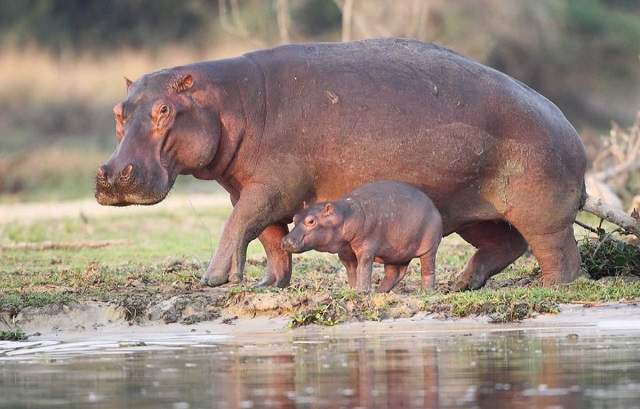5 Fascinating Facts About the Hippo
When you picture African wildlife, you likely think of the towering elephant, the swift cheetah, or the regal lion. But there’s one heavyweight champion of the continent that often surprises safari-goers—the **hippopotamus**. Despite its pudgy appearance and seemingly lazy behavior, the hippo is one of the most **complex**, **dangerous**, and **awe-inspiring** animals in Africa.
In this article, we’ll explore five mind-blowing facts about the hippopotamus—a semi-aquatic mammal that’s much more than meets the eye. From its biology to its behavior, you’re about to discover why this river giant deserves a place of respect and fascination in the African wild.
1. The Hippo Is One of Africa’s Most Dangerous Animals
Don’t let their goofy grins fool you—hippos are among the deadliest creatures on the continent. Responsible for an estimated **500 human deaths annually**, hippos are extremely territorial and unpredictable, especially near water.
A full-grown male can weigh up to 3,500 kg (7,700 lbs) and can run up to 30 km/h (19 mph) on land over short distances. Despite their massive size, hippos are astonishingly quick and agile, particularly when defending their territory or young.
Most attacks occur when humans unknowingly get between a hippo and deep water or approach a mother with calves. Their immense jaws can open nearly **180 degrees** and exert over **2,000 psi (pounds per square inch)** of pressure—enough to crush a crocodile or a small boat.
2. Hippos Are Semi-Aquatic—but They Can’t Swim
While hippos spend most of their lives in water, they technically do not swim. Instead, they move by walking or galloping along the bottom of rivers and lakes. Their bodies are too dense to float easily, and their legs—though short—are powerful enough to propel them through water with ease.
Hippos stay submerged for the majority of the day to regulate their body temperature and prevent sunburn. Interestingly, they surface for air every **3 to 5 minutes**, even while sleeping. This is an involuntary reflex that allows them to rise and breathe without waking.
Their skin also secretes a natural sunblock-like substance often called “blood sweat.” This red-orange fluid is not actually blood, but it serves as both a sunscreen and an antibiotic, protecting their skin from UV rays and infections.
3. They’re Surprisingly Vocal and Communicative
The hippo is far from silent. In fact, it’s one of the most **vocal mammals** in Africa, capable of making an array of noises, from honks and grunts to bellows and wheezes. These sounds help hippos communicate both above and below water.
One of the most fascinating aspects of hippo communication is their ability to “talk underwater.” Using a mix of nasal vibrations and surface calls, hippos can transmit messages across long distances in a river or lake environment. Researchers believe these calls help maintain social structures and territory boundaries.
The signature “hippo honk”—a deep, resonating chortle—can be heard up to a kilometer away. These sounds are not just random noise; they’re part of a highly organized **social system** with dominant males, subordinate bulls, and complex interactions.
4. They Play a Crucial Role in Their Ecosystem
The hippopotamus is what ecologists call a “keystone species”—an animal that has a disproportionately large effect on its environment. Hippos help shape aquatic ecosystems in multiple ways:
- Pathways and Channels: As they move through rivers, their trails can alter water flow and create natural irrigation systems.
- Fertilization: Their dung is rich in nutrients and fertilizes river systems, supporting algae and aquatic life.
- Habitat Creation: Wallows and pools made by hippos often become habitats for fish, frogs, and birds.
However, when hippo populations become too concentrated—particularly in man-made dams or restricted reserves—their waste can lead to ecological imbalance. This underscores the importance of sustainable wildlife management in safari regions.
5. Hippos Are More Closely Related to Whales Than to Other Land Mammals
You might assume the hippo is closely related to pigs, cows, or elephants. In truth, their closest living relatives are **whales and dolphins**! Genetic and fossil evidence places hippos within the order Artiodactyla, but specifically in the sub-group known as Whippomorpha, which includes whales.
Around 55 million years ago, the ancestors of today’s whales and hippos diverged from a common semiaquatic ancestor. While whales evolved to live entirely in the ocean, hippos remained on the edge—adapting to both land and water. This evolutionary lineage explains their unique anatomical features, including:
- Webbed feet suited for walking underwater
- A multi-chambered stomach like ruminants (but they don’t chew cud)
- Nostrils and ears that can close underwater
This evolutionary relationship is one of the most intriguing examples of how diverse life on Earth can adapt and survive across millennia.
See the Hippo in Its Natural Glory, Facts About the Hippo
The hippopotamus is a magnificent and misunderstood animal—part river dweller, part land mammal, and entirely fascinating. From their ecological impact to their ancient evolutionary roots, hippos are essential players in the African wilderness.
If you’re eager to witness the mighty hippo basking in riverbanks or yawning wide in a golden sunset, there’s no better way than to embark on an unforgettable African safari.
WildHorn Africa offers expertly guided safari tours designed to bring you face to face with the wonders of the wild—including up-close encounters with hippos in their natural habitat. Their eco-conscious, locally informed itineraries provide a safe and immersive wildlife experience like no other.
Book Your African Safari with WildHorn Africa Today
Facts About the Hippo #Facts About the Hippo Facts About the Hippo





 WildHorn Africa – Authentic and unforgettable tours across Africa, guided by local experts who know the land, wildlife, and culture best.
WildHorn Africa – Authentic and unforgettable tours across Africa, guided by local experts who know the land, wildlife, and culture best.


